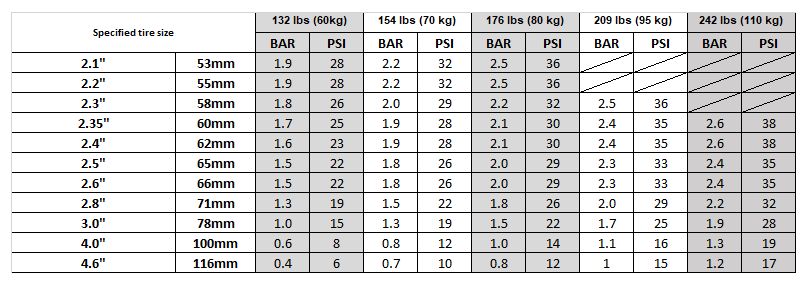Tire Pressure & Tubeless Conversion
The right tire pressure for your ride is personal and depends on your riding style, the terrain you'll be riding and the conditions of that terrain on the day you're riding. What you see below is a recommendation of a starting point pressure, a "ballpark" if you will, based on rider + gear weight and tire width. You'll also see a decal on your wheels indicating maximum inflation pressure. Never exceed the maximum inflation pressure of your tires or rims. Enjoy your ride!
Mountain Tire Pressure Data Table

*Crossed out cells: tire size not recommended, as the rider's weight may require a tire pressure that is too high for the tire or rim.
Need more information on tire treads and casings? Visit our Mountain Tires page.
Tubeless conversion
Many riders choose to convert to tubeless tires to prevent pinch flats. Tubeless tires allow riders to use lower inflation pressure without the risk of damaging a tube from impacts. The rims and tires on Rockhopper Elite and Expert are tubeless-compatible. For more information, see our Tubeless Conversion page.




























































































